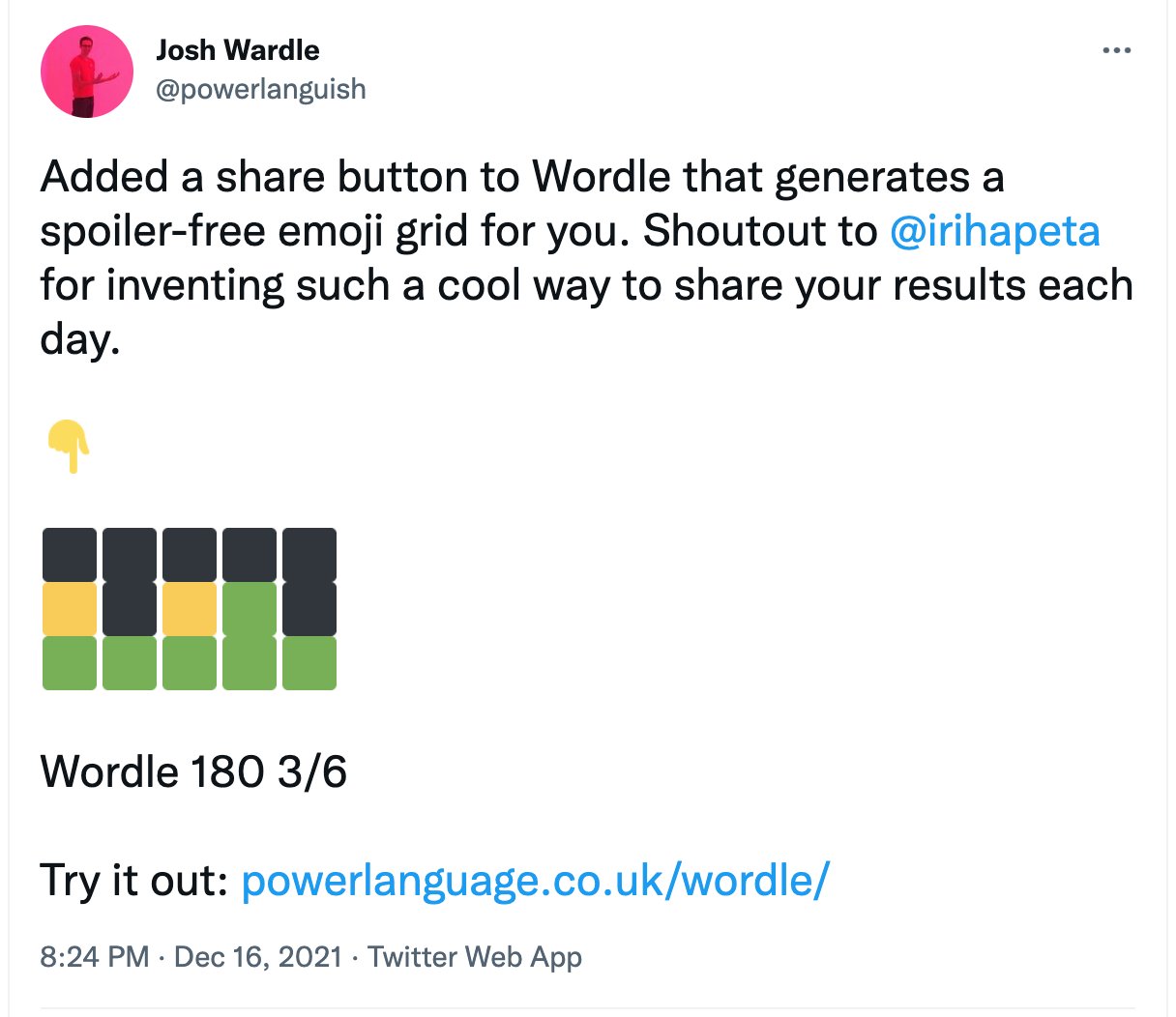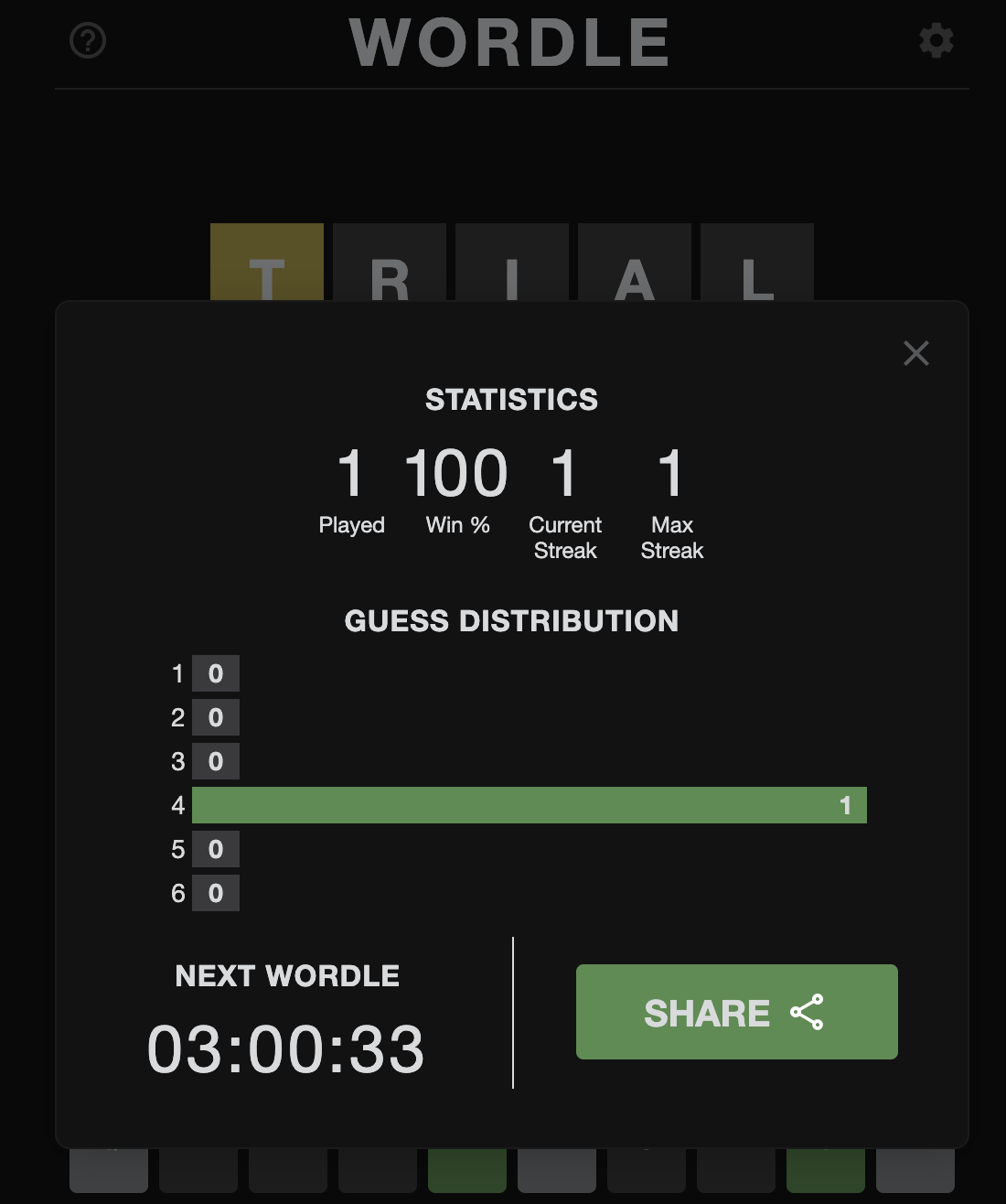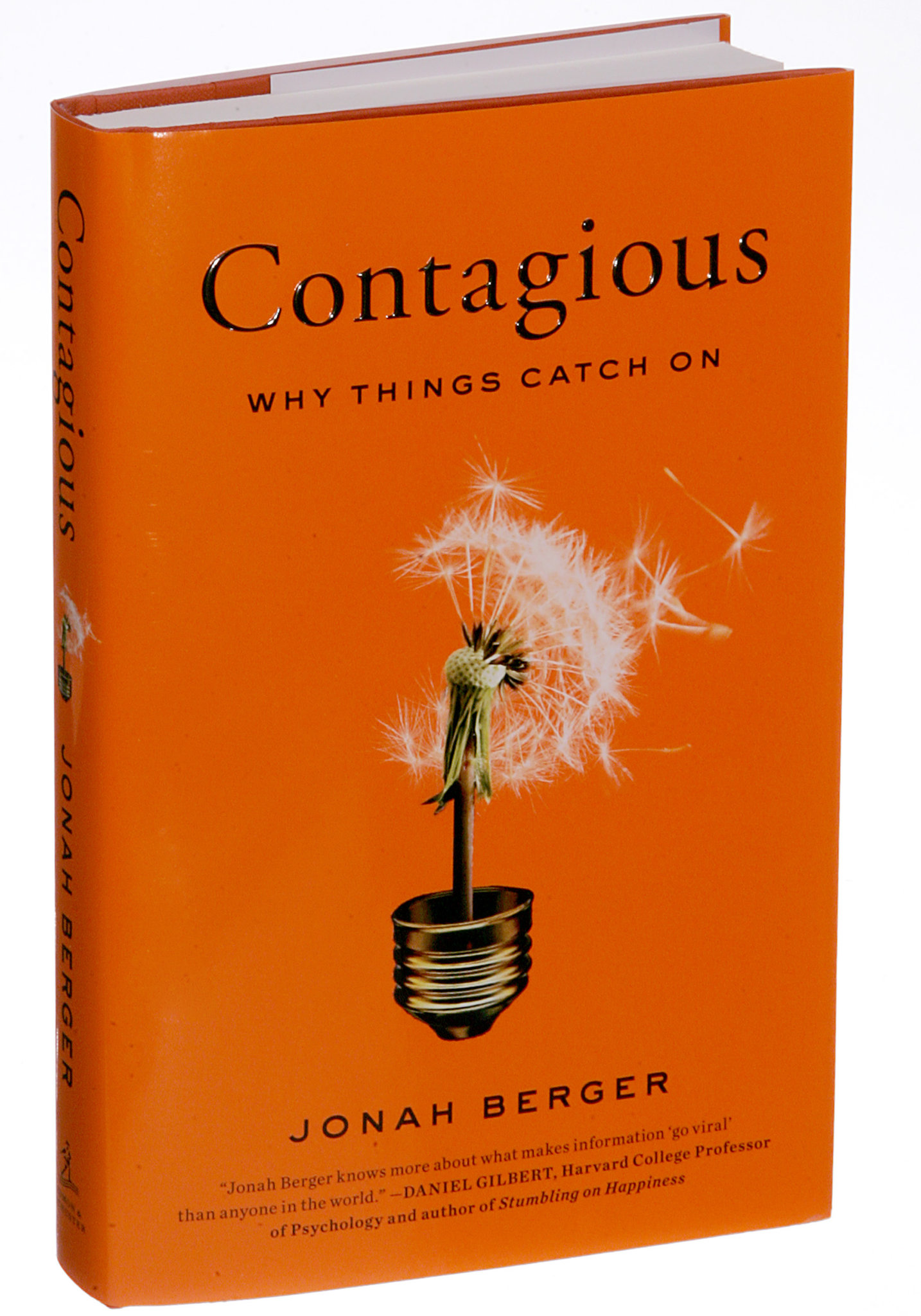
Have you noticed people sharing random sets of colored squares on social media platforms like Twitter?

I started noticing this some two weeks ago but assumed (wrongly) that it was something to do with a crossword puzzle (that I’m not very interested in, generally). So I did not bother to explore further. But a week ago, the number of people sharing these squares went up exponentially and so I was forced to explore what this was all about. My only clue, besides asking the people who shared it, was the word ‘Wordle’.
is a highly addictive word game created by a software engineer at Reddit, Josh Wardle (it seems like he named the game after himself, but brilliantly in context to the game itself!). It felt a bit like a mix of Mastermind and Hangman!
The rules are very simple.
You have 6 chances to guess a 5-letter word.
Each day has just one puzzle – so, just a single 5-letter word for the entire world.
When you try a/any word in your first attempt, a right letter at the right position turns green, a right letter but in the wrong position turns yellow and the rest remain grey.
I played it on Sunday for the first time and got the word in my 4th attempt. My wife got it on the 3rd attempt! And that’s it – it was over in about 10 minutes or so. You have to wait for the next day for a new word!
Josh launched the game in October 2021. It was being played by serious word nerds who got to know about it first.
And people were sporadically using simple colored square emojis to share their game with the world on social media.

Josh noticed the sharing, sensed the potential there and added a share button in his game.


Now, when you get the word correctly, you get a share button and when you click the button, it pastes a colored squares grid using just 3 colors!

So, when I share my wordle success of the day, others can notice a few specific things:
- that I indulge in something called Wordle (the text on top of the squares)
- if they knew about Wordle, they see the number of attempts I took
- they see the correct letters and positions I got in each attempt
- if they did not know about Wordle, the shared content could make them curious enough to know more about it and join the tribe
- when they try the game, they would realize that they too are playing the same game I played – it’s the same game for everyone in the world, for that day; that connects us all together!
- and when they get their first 5-letter word right, they are incentivized to share it forward and repeat the chain
There is no URL to be clicked, no video to be watched, no app to download. The share option sets an intriguing premise to those who don’t know about the game and makes them want to know what it could be about, and it also works as a trigger to try the game to those who know it (if they had not tried the day’s challenge).
The most remarkable idea behind the sharing is that it uses three simple colored squares are a basic part of the emoji options on all social media platforms! And because it doesn’t spoon-feed anything else, it also sets up an intrigue that spurs more people to want to know more.

The game is already a fantastic example of drip-feeding – just one word per day, no overdoing the attention it demands of you. No archives to play earlier words, no advanced rules (there is an option for a ‘hard mode’, though), nothing. It’s not too tough, or too easy. It’s something that I indulge in first thing in the morning, before breakfast. And it takes about 5-10 minutes depending on the word, but that time seems well spent, exercising my brain.
These are only about the player, there is still no impetus for players to share their experience or interest in the game. But completing the game gives you a nice little dopamine kick. The sharing option extends that kick to show others that you are part of a clique that leaves a mysterious trail on social media using square emojis!
That’s where the share button and the way it generates information about the game supercharges word-of-mouth. The simplicity of the share button is as incredibly elegant as the way it induces word-of-mouth for the game!
In the 2013 book, ‘Contagious: Why Things Catch On‘, Wharton professor Jonah Berger explains the science behind why things catch on and go ‘viral’. Specifically, he offers 6 principles that make things go viral – social currency, triggers, emotion, public, practical value, and stories.

1. Social currency: As Jonah says, ‘just as people use money to buy products or services, they use social currency to achieve desired positive impressions among their families, friends, and colleagues’.
2. Triggers: In Jonah’s own words, ‘triggers not only get people talking, they keep them talking. Top of mind means tip of tongue’.
3. Emotion: Jonah tells marketers— ‘rather than harping on features or facts, we need to focus on feelings; the underlying emotions that motivate people to action’.
4. Public: ‘Making something more observable makes it easier to imitate. Thus a key factor in driving products to catch on is public visibility. The observability of a product has a huge impact on whether products and ideas catch on’, according to Jonah.
5. Practical: ‘The way people actually make decisions often violates standard economic assumptions about how they should make decisions. Judgments and decisions are not always rational or optimal. Instead, they are based on psychological principles of how people perceived and process information’. So, offer practical value for your products or services to not just be bought but also tell others.
6. Stories: ‘People don’t think in terms of information. They think in terms of narratives… Stories carry things. A lesson or moral. Information or a take-home message’.
The Wordle share button checks the principles around social currency, trigger, and public effortlessly.
Of course, given the simplicity of the game (as it is right now), it may lose momentum unless Josh adds newer features and options to retain and sustain interest. Also, for existing users, the everyday Wordle share on social media may seem pointless and annoying if they see more people sharing those squares, so they could try muting the word ‘Wordle’ on platforms that allow such an option (like Twitter).
But what the share button achieves is a stupendous lesson in generating word-of-mouth, both in idea and in the way it has been executed using something as basic as emojis.
